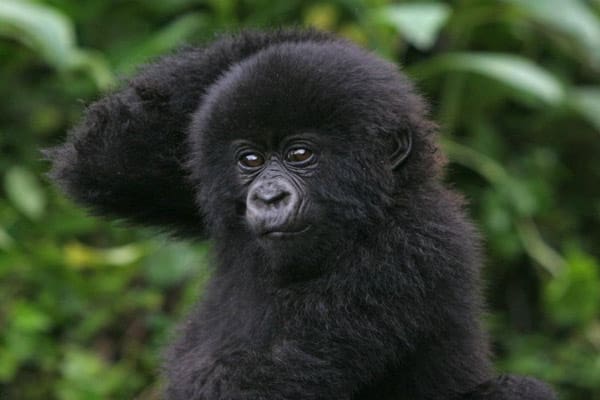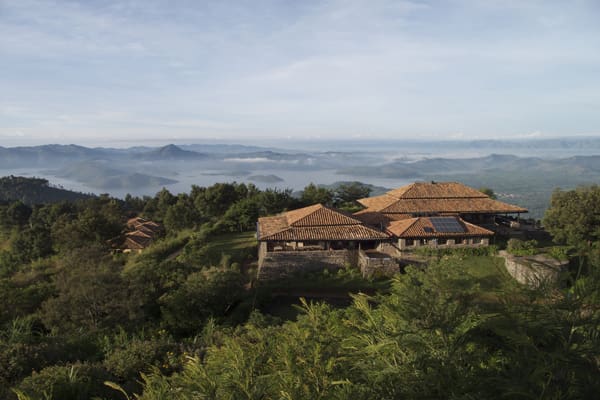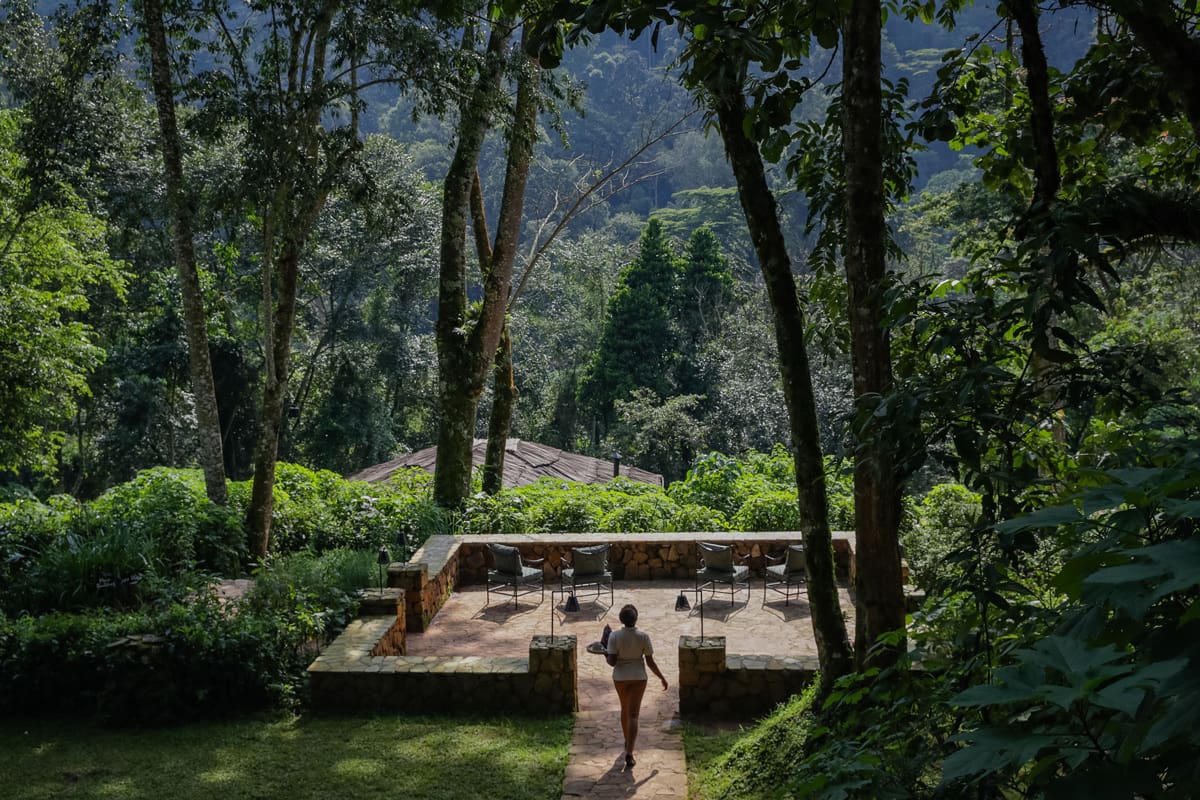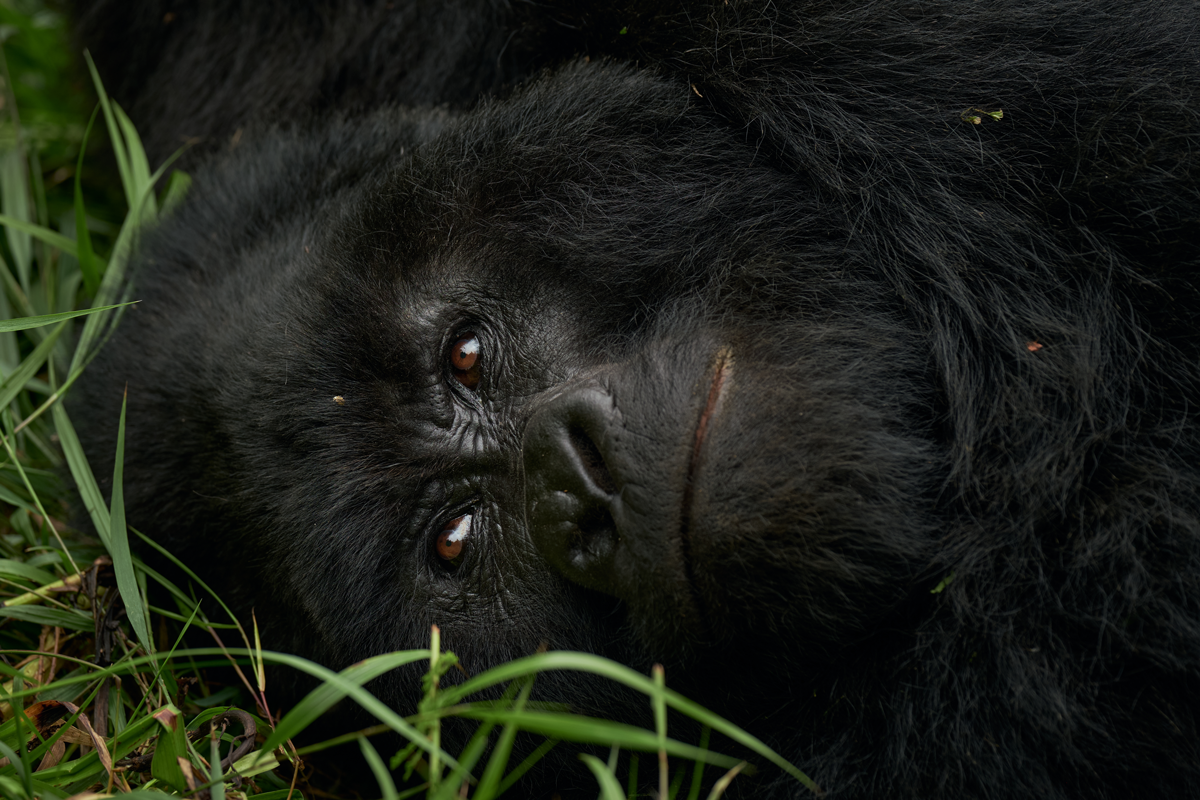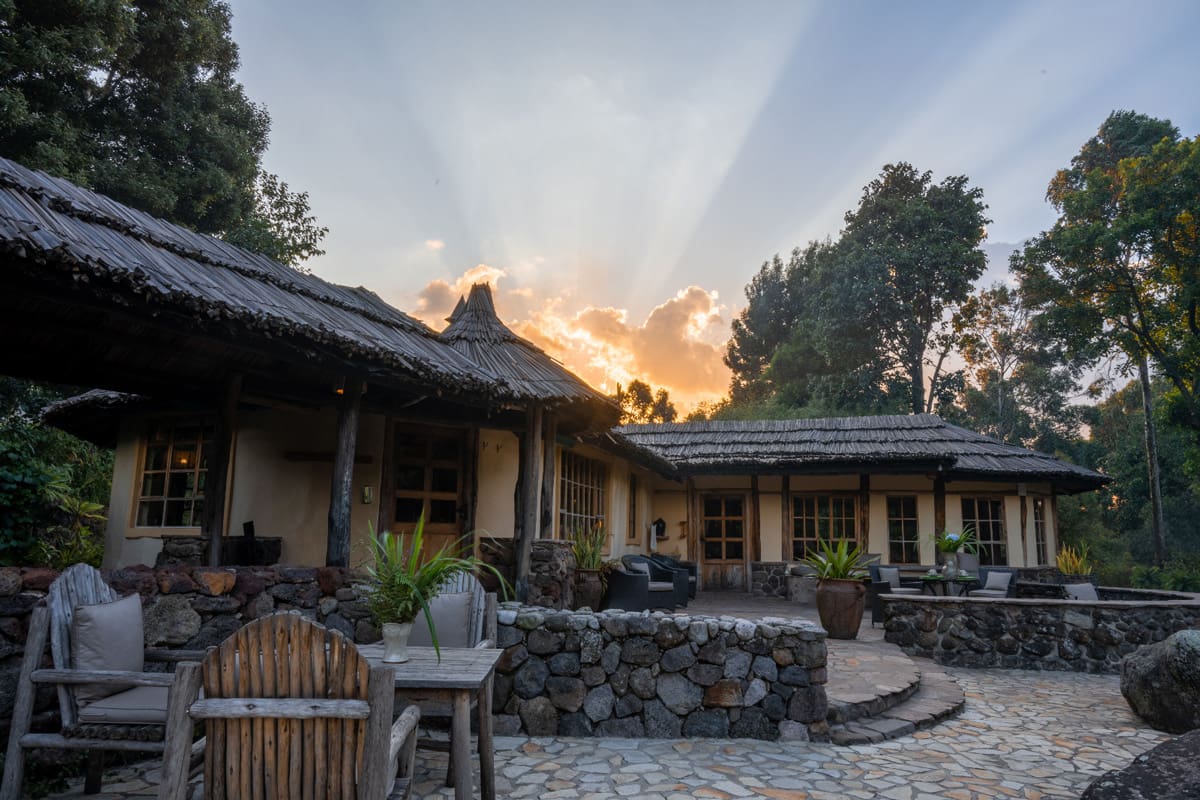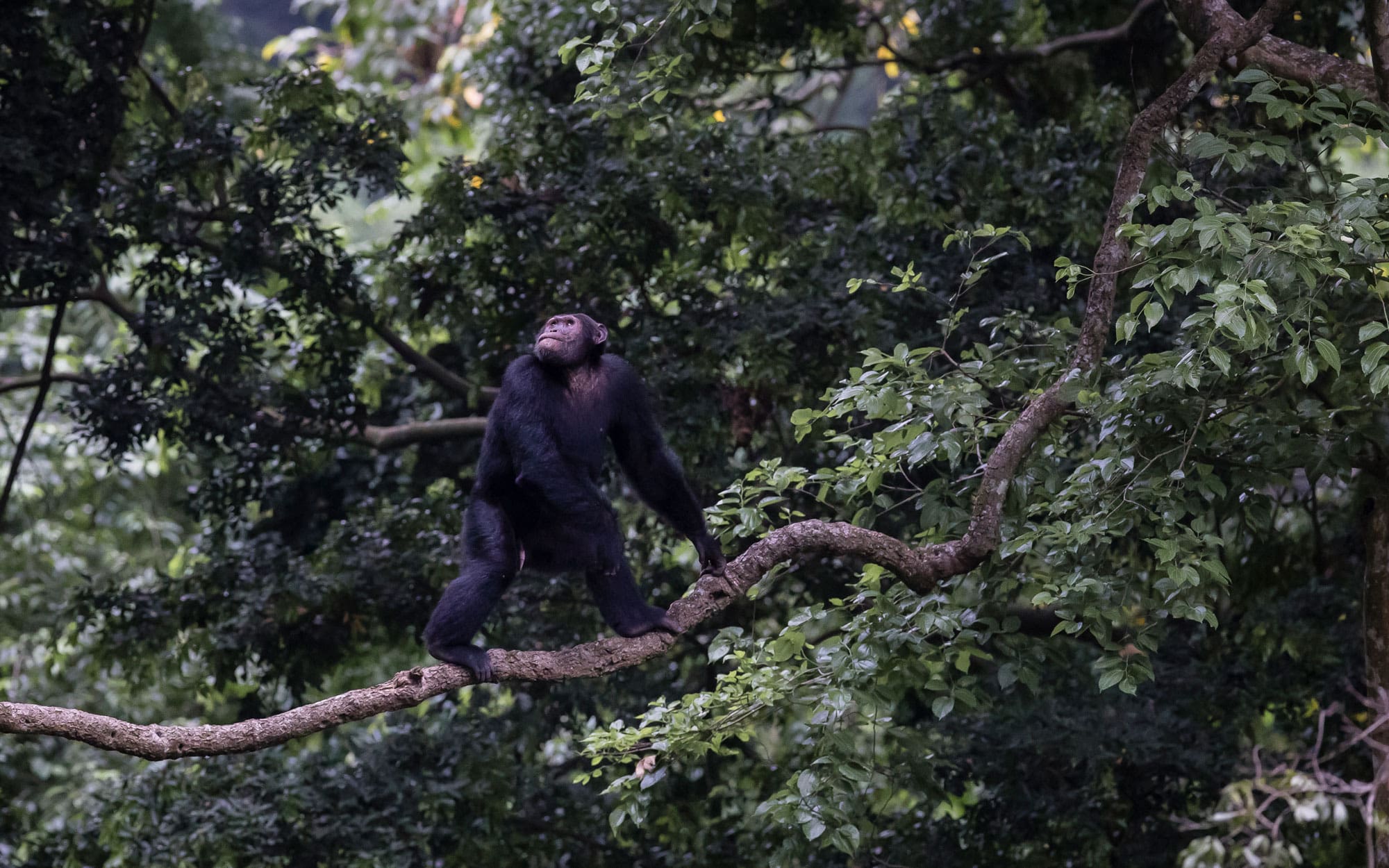All too soon the golden hour passed and I began my descent, sliding treacherously downhill. A couple of hours later, dirty and happy, I climbed back into the Land Rover and began the drive to Uganda, already anticipating my next gorilla encounter in the Bwindi Impenetrable Forest.
Early the next morning, over porridge and fresh fruit, I chatted to Joselyne, the manager at Bwindi Lodge, who suggested that my upcoming encounter in the Impenetrable Forest would be di erent to the last. “The forest has that name for a reason,” she laughed. Indeed, I soon found the 128 square-mile Unesco World Heritage site to be as unyielding as its moniker suggests. The compact jungle vegetation was only navigable by way of machete-wielding guides, who expertly hacked at the dense shrubs and the wild twisting vines. This allowed only a glimpse of the gorillas as they moved around the undergrowth, shifting in and out of view. Far from the display that I received in Volcanoes National Park, this encounter brought home the truth that, habituated as the gorillas may be, they remain wild and elusive creatures. This is still their homeland, and I am a mere visitor, fortunate enough to be invited in.
The next day, as I travelled northwards through Uganda, along the border of the Democratic Republic of the Congo, I was struck by the diversity of the land, as the emerald-green mountains gradually flattened into the dry, grassy plains of Queen Elizabeth National Park. The air was dry and hot as we bumped along the crumbling roads, dodging deep potholes and passing herds of elephants flapping their ears. Sticky and dusty, we slowed down at the eastern edge of the park, where the scenery had transformed, once again, to reveal the gaping drop of the Kyambura Gorge. This tropical ravine was home to a family of chimpanzees, whose frenzied, visceral shrills echoed down below. As the sinking sun turned the sky a vivid orange that slowly dissipated into puffs of pink and purple streaks, I contemplated everything that I had seen over the past few days. The mountain gorillas would almost certainly have been hunted to extinction were it not for pioneering conservationists like Moman. The proof, for these vulnerable creatures, is in their happily rising population. Without tourism, there would be no gorillas.
